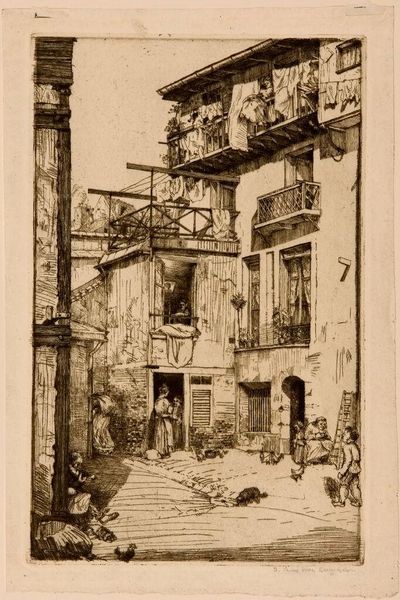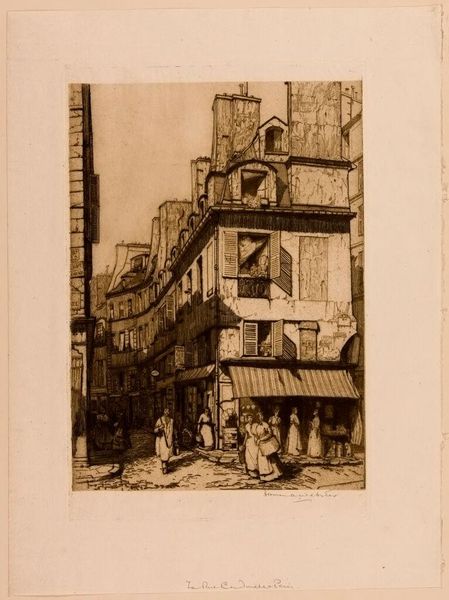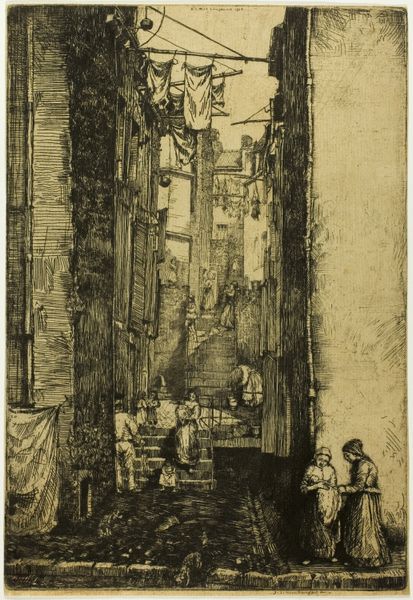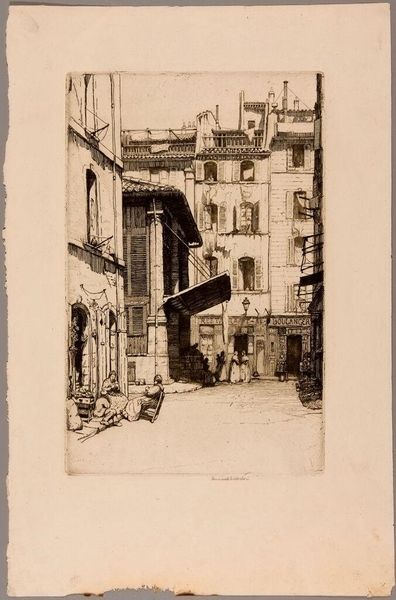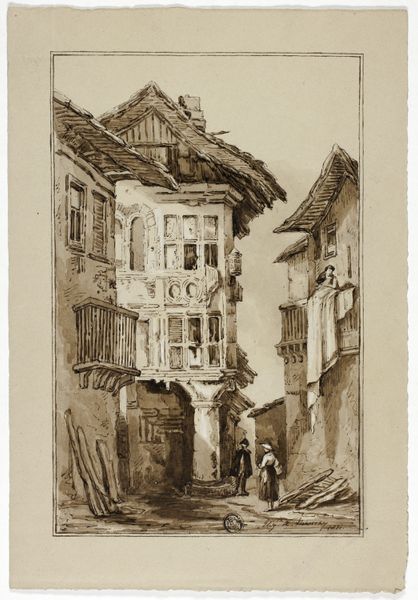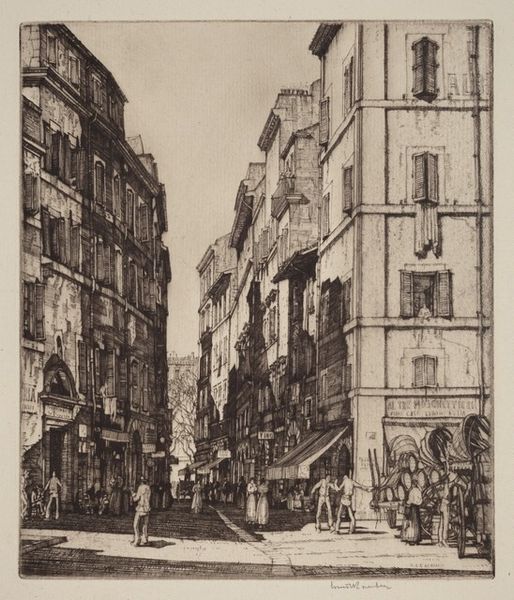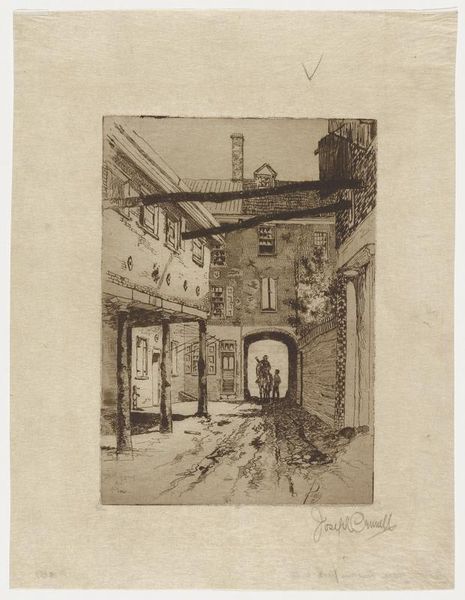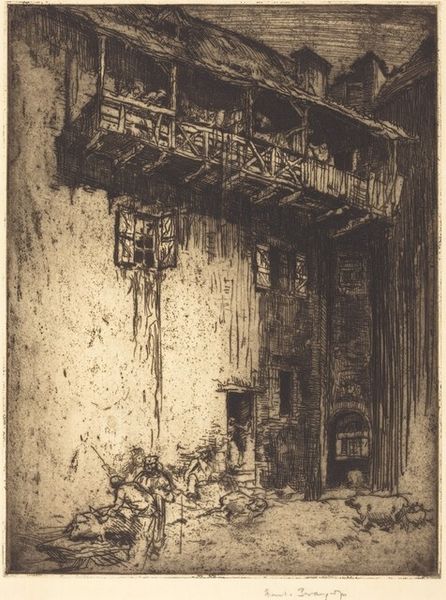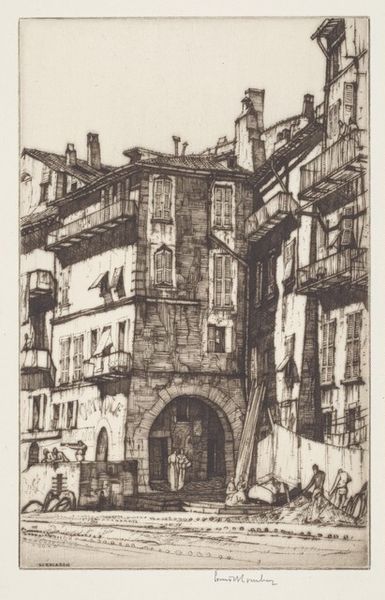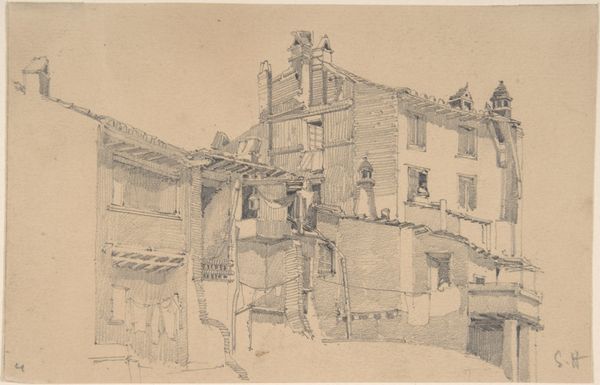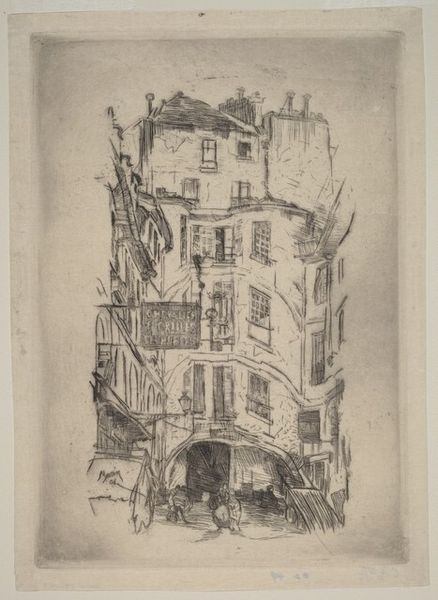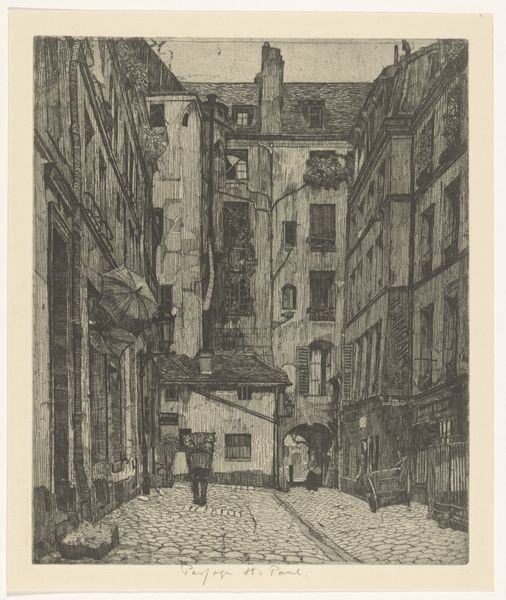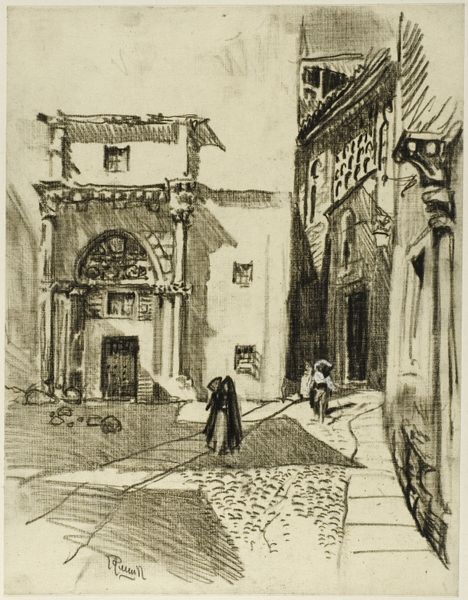
Dimensions: 250 × 159 mm (image/plate); 253 × 160 mm (sheet)
Copyright: Public Domain
Curator: What strikes me immediately is the everyday nature of this print, capturing a vibrant slice of urban life. Editor: Yes, "Cour des Gobelins," made by Donald Shaw MacLaughlan in 1901, is a stunning example of early 20th-century printmaking. Specifically, it is an etching in black ink on paper, currently residing at The Art Institute of Chicago. Curator: Black ink brings an immediate connection to my memory of engravings from Hogarth. What would you make of the recurring image of people looking out of their windows in relation to contemporary debates about surveillance in this cityscape scene? Editor: That’s a sharp reading! Windows function as both apertures of life and sites of scrutiny, so it is apt that you are thinking of panopticism, class, and social strata. But beyond that lens of political anxiety, notice too how MacLaughlan uses the motif of figures placed in windows, how the architectural elements are framing devices. We're drawn to find connections, shared stories. It is hard to know if the composition is an intentional appeal to some architectural god overseeing the goings on, though. Curator: Do you read it as sentimental? I feel I am looking at a visual ode to Parisian community at the height of French imperialism, especially as there is something melancholic to it. All those signs and symbols pointing to another bygone era when modernism was arriving, but folks maintained a shared life. Editor: Well, yes, etching itself lends a kind of antiquated air, and that melancholy note, perhaps because it speaks of impermanence so eloquently through its ephemerality. These textures, though, have strong appeal. The image makes clear the building, in great and explicit detail and with so much cross-hatching. These lines do more than show shape; they show age, depth, story! Even with a narrow range of dark ink, so many people and so much history are captured. I find that amazing. Curator: In that sense, MacLaughlan becomes not just an artist, but also a visual anthropologist. The cobblestone streets, the clotheslines strung between buildings – all serve as visual cues into a particular historical moment. Editor: And he shows us that people haven't changed all that much since 1901. Curator: Absolutely, even a century removed from its creation, the print speaks to the universality of urban existence. Editor: It certainly does!
Comments
No comments
Be the first to comment and join the conversation on the ultimate creative platform.
